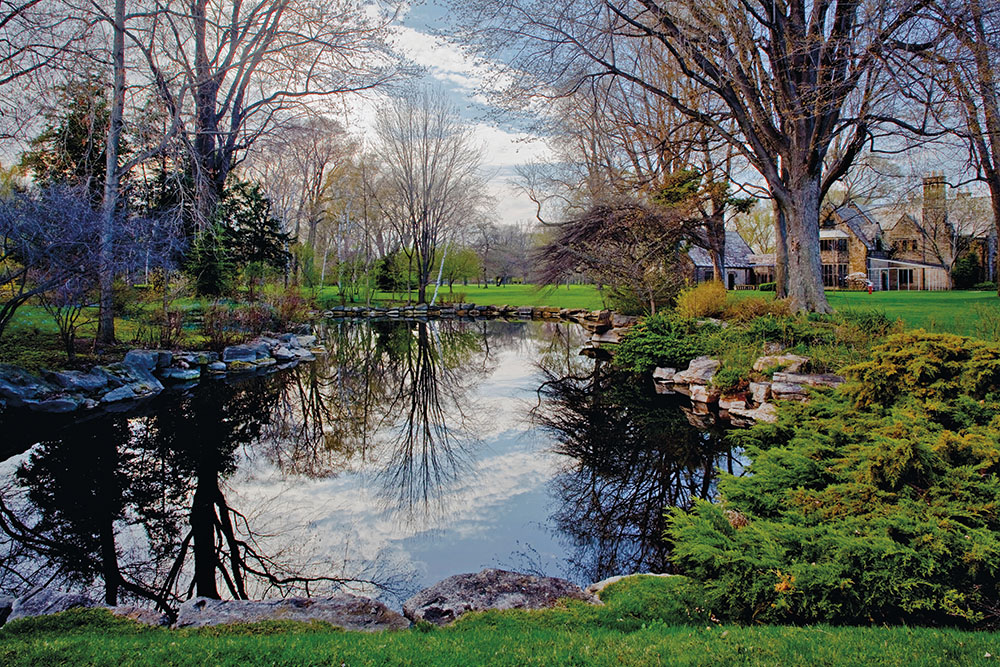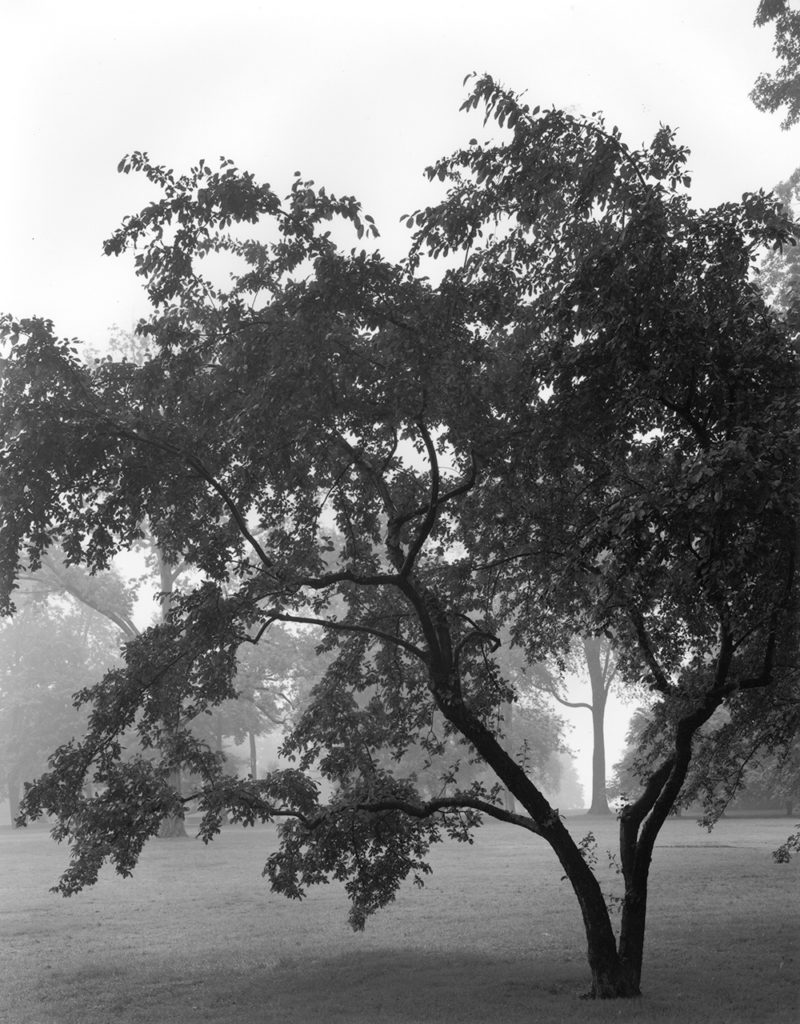Jensen’s Masterpiece on Lake St. Clair: Edsel & Eleanor Ford House
Grosse Pointe Shores, Michigan

On November 1, 2016, the Edsel & Eleanor Ford House received notification from the U.S. Department of the Interior that the Grosse Pointe Shores estate had been awarded National Historic Landmark status. Remarkably, the date coincided with the Fords’ one hundredth wedding anniversary. Edsel and Eleanor could not have received a more exciting gift than having their beloved home at Gaukler Point recognized as a site of national importance, worthy of this prestigious designation.
Research to support the nomination, spearheaded by University of Michigan professor Robert E. Grese and Ford House staff, stretched over several years. This exhaustive process benefited from two outstanding publications from the Library of American Landscape History: The Native Landscape Reader, edited by Grese, and A Genius for Place: American Landscapes of the Country Place Era by Robin Karson. The latter offered invaluable perspective on the Jens Jensen–designed landscape in the context of the first four decades of twentieth-century landscape design in America—analysis that proved persuasive in the nomination process. The essays in The Native Landscape Reader also proved invaluable, not only for the purposes of the nomination but also for the development of public programming at Ford House and our sister site, the Henry Ford Estate in Dearborn.

The Albert Kahn–designed buildings of Ford House are historically significant examples of Tudor Revival architecture, but it is the Jensen-designed landscape that brings national significance to the estate. The Jensen landscape, which has been described as a “partnership” between Jensen, Kahn, and the Fords, is considered to be one of the “finest intact examples of a landscape that embodies the principals, theories, practices, and aesthetics of Jensen’s design work.” The nomination focused on the quality of Jensen’s design while acknowledging the role of the Kahn-designed structures in “helping to define the landscape and the composition of the Country Place estate.”
It is this unique partnership of Jensen, Kahn, and Ford that makes the Ford House landscape remarkable. As Karson noted in A Genius for Place, “The story of this landscape—Jensen’s largest and arguably his finest work—is closely intertwined with Edsel’s own strong aesthetic and, to some degree, the modern changes in American culture that were occurring in the wake of Henry’s automobiles.” Karson further comments: “That Jensen’s work for Edsel and Eleanor Ford achieved the harmonious balance it did—between a focused response to nature and the taste of one very modern man—speaks to the strength of Jensen’s talent and his sensitivity to the genius loci.”
Ford House and the Henry Ford Estate are both National Historic Landmarks that together provide a fascinating picture of Jensen and his role in the Country Place era. The Henry Ford Estate, which received its designation in 1966, represents Jensen’s midcareer (1913–1920) design phase, while Ford House represents his later, mature design expression. Both sites figure importantly among a small number of Jensen’s estates that retain significant aspects of their original design and are open to the public. The National Historic Landmark designation is important on so many levels—not least because it will guide future stewards in their quests to maintain these remarkable places to the highest standards of integrity and authenticity.
—Kathleen Stiso Mullins